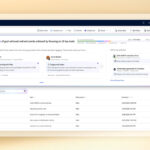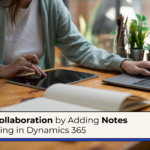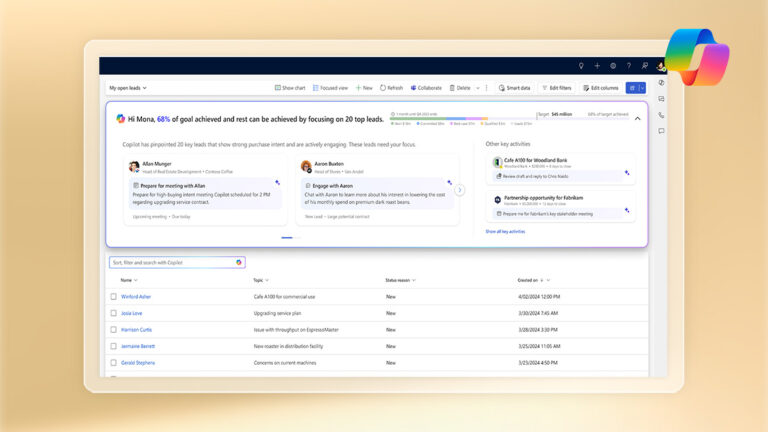Salesforce is on a mission to deliver secure, generative AI to more parts of their platform, and Slack – the conversational interface for the Salesforce platform – is the next candidate to receive the transformation. Slack will bring generative AI natively into the user experience to help users work smarter, learn faster, and communicate better.
The Slack GPT platform features a revamped Slack workflow builder, based on the concept of building blocks (i.e. remixable, reusable pieces of functionality) that will include generative AI-powered and AI-supported building blocks for workflows. Currently available for developers, the ultimate goal is to make generative AI powered workflows available to anyone in an organization to ‘pick up’ and place into their own workflows.
Finally, coming soon, Einstein GPT powered insights will bring customer data to life in Slack. We’ll explore the ‘what’ and the ‘why’ of Slack GPT, the revamped workflow builder, and also examples of how generative AI can enhance the user experience and stitch together multiple actions to truly boost productivity.
What is Slack GPT?
Slack will bring AI natively into the user experience to help users work smarter, learn faster, and communicate better.
Chat GPT for Slack was teased at TrailblazerDX. Slack are stating that this will be the first piece of their larger vision of how generative AI will add a new layer of productivity to the platform.
Slack GPT is based around three pillars:
- Slack will bring AI natively into the user experience to help users work smarter, learn faster, and communicate better. For example, AI-powered conversation summaries and writing assistance will be available directly in Slack.
- Slack ‘builders’ will be able to build no-code workflows that embed AI actions, with simple prompts at each step. This makes it easy for anybody to deploy AI automation. For example, securely integrate a large language model (LLM), such as Open AI, Claude, or use the LLM of your choice (including multiple participating in the Salesforce Ventures Generative AI Fund), and in the future, Salesforce’s proprietary LLMs.
- Einstein GPT app for Slack, coming soon, Einstein GPT powered insights will bring customer data to life in Slack.
Why Slack GPT?
When it comes to generative AI, Slack believe they have an unique advantage for these reasons:
- Organizational knowledge to leverage on every project, topic, and team, generated through all the messages, files, and clips that happen (and are shared) in Slack every day.
- A robust partner ecosystem to extend Slack’s capabilities with third-party apps. There are approximately 2,600 apps, including integrations with some of the leading large language models (LLMs), such as Chat GPT and Claude.
- A secure, trusted platform that let’s organizations choose how they want to integrate their tools with generative AI.

Slack GPT Use Cases
Slack will bring AI natively into the user experience to help users work smarter, learn faster, and communicate better:
- AI-generated channel summaries: Hop into a Slack channel and be able to get up to speed on unread Slack messages with a single click, the moment you start scrolling through a channel.
- Huddles summaries: Huddles are meetings that can be launched spontaneously within Slack, helping teams brainstorm, or untangle misalignments. In the future, Slack GPT will be a virtual note-taker, summarizing huddles with a clear recap and next steps.

- AI-assisted writing: Writing assistance directly in the Slack message composer will save an incredible amount of time. By making a first draft, you can ask Slack GPT to help tweak words or the tone.
- Documentation/knowledge repositories: Alongside a Slack channel you have a Canvas. Slack Canvases are described as a “surface to capture and share knowledge [with] the ability to access and take action on Salesforce data directly in Slack”. When Slack Canvas is paired with the Slack GPT platform, you will be able to customize each Canvas with time-saving automations. Plus, coming soon, you’ll be able to embed workflows right into the Canvas, so you can take action right in the context of the information it contains.
Slack GPT Platform (for Developers)
The new platform is a major part of Slack’s generative AI vision. For organizations wanting to develop custom solutions on Slack, the secure, open, and trusted platform gives them the foundation to integrate generative AI, with choice and flexibility. For example, bring your own AI model into Slack. Slack offers APIs and developer tools to support this.
Since Open AI opened their APIs for Chat GPT, Slack reported that developers have built more than 4,000 custom apps for Slack (that integrate with Chat GPT).

Revamped Slack Workflow Builder
The newly revamped workflow builder is based on the concept of building blocks (i.e. remixable, reusable pieces of functionality) that will include generative AI-powered and AI-supported building blocks for workflows.

This enhanced platform became generally available to developers last week, who are already able to start leveraging these building blocks.
The goal of this platform is to make generative AI powered workflows available not only to developers, but also for anyone to build no-code workflows that automate actions across Slack, between different LLMs, and other tools in your tech stack. This makes it easier to leverage data flowing into/out of Slack, and occurring within Slack. At some point this summer, anybody in an organization will be able to ‘pick up’ and place building blocks into their own workflows.
Einstein GPT App for Slack
Coming soon, Einstein GPT powered insights will bring customer data to life in Slack. The examples in the following section are illustrative of this in action.

Slack GPT: End-to-End Examples
The following examples stitch multiple notifications and actions together designed to be built using composable building blocks.
AI-Powered Lead Response
This example workflow alerts the appropriate rep/s when a new lead record comes into Sales Cloud, which means that they can react faster to the prospect showing interest; however, this workflow can now go much further, where the sales rep isn’t starting from scratch. The rep may wish to:
- Compile data from CRM records, asking Chat GPT to create a summary of the Lead/Account record and put this information into a document for further annotation.
- Draft a prospecting email.
- Generate qualification questions specific to the query/context of their organization (e.g. industry).
- Be notified when the information is ready, or the specific sales rep that owns the Lead/Account to be tagged in a channel.
Slack/GPT can recognize once each of these steps are completed, and move to the next without any manual intervention.
Engineering Incident Resolutions
Many engineering organizations use a tool called PagerDuty, which alerts users whenever there’s trouble with a server – which can be business-critical.
When an incident closes in PagerDuty, a workflow could:
- Prompt Chat GPT to provide a summary of the incident – including the start and end time, what happened, the root cause, who was involved.
- If all users relevant to the incident are members of a Slack channel, they can be notified easily about the key details of the incident.
- Publish this summary to Service Cloud.
- Update the channel Canvas for posterity.
Summary
Slack GPT is going to make all of Slack’s productivity-boosting features more powerful, bringing generative AI natively into the user experience to help users work smarter, learn faster, and communicate better.
The Slack GPT platform features a revamped Slack workflow builder, based on the concept of building blocks – remixable, reusable pieces of functionality. Currently available for developers, the ultimate goal is to make generative AI powered workflows available to anyone in an organization to ‘pick up’ and place into their own workflows.
Finally, Slack conducted a study of 18,000 desk workers to gain a pulse on employee productivity. Only 27% of companies are currently using AI tools to increase their efficiency. However, those who use automations at work estimate saving an average of 3.6 hours per week that can be spent on meaningful work (which equates to a minimum of one working month per year, per employee). This is why Slack believe that generative AI + automation are the golden keys to improving employee productivity and satisfaction.















